- Home
- P. G. Wodehouse
Wodehouse At the Wicket
Wodehouse At the Wicket Read online
Contents
About the Book
About the Author
Also by P.G. Wodehouse
A Cricketing Chronology
Title Page
Introduction
‘The MCC Match’
‘The Match with Downing’s’
‘At Lords’
‘Bingley Crocker Learns Cricket’
‘How’s That, Umpire?’
‘Reginald’s Record Knock’
‘Ladies and Gentlemen v. Players’
‘Between the Innings’
‘On Fast Bowling’
‘Missed!’
‘The Cricketer in Winter’
‘The Umpire’
‘MCC’
‘Under MVC Rules’
‘Five Minutes on the Cricket Field’
‘Now, Talking About Cricket’
‘Dulwich v. St Paul’s’
Extras
Scorecards
Illustrations
Acknowledgements
Copyright
About the Book
From his early days Wodehouse adored cricket, and references to the game run like a golden thread though his writings. He not only wrote about this glorious British pastime, but also played it well, appearing six times at Lord’s, where his first captain was Sir Arthur Conan Doyle.
Illustrated with wonderful drawings and contemporary score-sheets, Wodehouse at the Wicket is the first ever compendium of Wodehouse’s writings on cricket. Edited by cricket historian Murray Hedgcock, this charming book also contains fascinating facts about Wodehouse’s cricketing career and how it is reflected in his work.
This is the perfect gift for Wodehouse readers and fans of all things cricket.
About the Author
Pelham Grenville Wodehouse (always known as ‘Plum’) wrote more than ninety novels and some three hundred short stories over 73 years. He is widely recognised as the greatest 20th century writer of humour in the English language.
Wodehouse mixed the high culture of his classical education with the popular slang of the suburbs in both England and America, becoming a ‘cartoonist of words’. Drawing on the antics of a near-contemporary world, he placed his Drones, Earls, Ladies (including draconian aunts and eligible girls) and Valets, in a recently vanished society, whose reality is transformed by his remarkable imagination into something timeless and enduring.
Perhaps best known for the escapades of Bertie Wooster and Jeeves, Wodehouse also created the world of Blandings Castle, home to Lord Emsworth and his cherished pig, the Empress of Blandings. His stories include gems concerning the irrepressible and disreputable Ukridge; Psmith, the elegant socialist; the ever-so-slightly-unscrupulous Fifth Earl of Ickenham, better known as Uncle Fred; and those related by Mr Mulliner, the charming raconteur of The Angler’s Rest, and the Oldest Member at the Golf Club.
Wodehouse collaborated with a variety of partners on straight plays and worked principally alongside Guy Bolton on providing the lyrics and script for musical comedies with such composers as George Gershwin, Irving Berlin and Cole Porter. He liked to say that the royalties for ‘Just My Bill’, which Jerome Kern incorporated into Showboat, were enough to keep him in tobacco and whisky for the rest of his life.
In 1936 he was awarded The Mark Twain Medal for ‘having made an outstanding and lasting contribution to the happiness of the world’. He was made a Doctor of Letters by Oxford University in 1939 and in 1975, aged 93, he was knighted by Queen Elizabeth II. He died shortly afterwards, on St Valentine’s Day.
To have created so many characters that require no introduction places him in a very select group of writers, lead by Shakespeare and Dickens.
Also by P.G. Wodehouse
Fiction
Aunts Aren’t Gentlemen
The Adventures of Sally
Bachelors Anonymous
Barmy in Wonderland
Big Money
Bill the Conqueror
Blandings Castle and Elsewhere
Carry On, Jeeves
The Clicking of Cuthbert
Cocktail Time
The Code of the Woosters
The Coming of Bill
Company for Henry
A Damsel in Distress
Do Butlers Burgle Banks
Doctor Sally
Eggs, Beans and Crumpets
A Few Quick Ones
French Leave
Frozen Assets
Full Moon
Galahad at Blandings
A Gentleman of Leisure
The Girl in Blue
The Girl on the Boat
The Gold Bat
The Head of Kay’s
The Heart of a Goof
Heavy Weather
Hot Water
Ice in the Bedroom
If I Were You
Indiscretions of Archie
The Inimitable Jeeves
Jeeves and the Feudal Spirit
Jeeves in the Offing
Jill the Reckless
Joy in the Morning
Laughing Gas
Leave it to Psmith
The Little Nugget
Lord Emsworth and Others
Louder and Funnier
Love Among the Chickens
The Luck of Bodkins
The Man Upstairs
The Man with Two Left Feet
The Mating Season
Meet Mr Mulliner
Mike and Psmith
Mike at Wrykyn
Money for Nothing
Money in the Bank
Mr Mulliner Speaking
Much Obliged, Jeeves
Mulliner Nights
Not George Washington
Nothing Serious
The Old Reliable
Pearls, Girls and Monty Bodkin
A Pelican at Blandings
Piccadilly Jim
Pigs Have Wings
Plum Pie
The Pothunters
A Prefect’s Uncle
The Prince and Betty
Psmith, Journalist
Psmith in the City
Quick Service
Right Ho, Jeeves
Ring for Jeeves
Sam me Sudden
Service with a Smile
The Small Bachelor
Something Fishy
Something Fresh
Spring Fever
Stiff Upper Lip, Jeeves
Summer Lightning
Summer Moonshine
Sunset at Blandings
The Swoop
Tales of St Austin’s
Thank You, Jeeves
Ukridge
Uncle Dynamite
Uncle Fred in the Springtime
Uneasy Money
Very Good, Jeeves
The White Feather
William Tell Told Again
Young Men in Spats
Omnibuses
The World of Blandings
The World of Jeeves
The World of Mr Mulliner
The World of Psmith
The World of Ukridge
The World of Uncle Fred
Wodehouse Nuggets (edited by Richard Usborne)
The World of Wodehouse Clergy
The Hollywood Omnibus
Weekend Wodehouse
Paperback Omnibuses
The Golf Omnibus
The Aunts Omnibus
The Drones Omnibus
The Jeeves Omnibus 1
The Jeeves Omnibus 3
Poems
The Parrot and Other Poems
Autobiographical
Wodehouse on Wodehouse (comprising Bring on the Girls, Over Seventy, Performing Flea)
Letters
Yours, Plum
> P.G. Wodehouse: A Cricketing Chronology
1881, 15 October
– Born Guildford, Surrey
1894, 2 May
– Enters Dulwich College
1894, July
– Plays for Upper IIIB v. Upper IIIA
1899, 20 May
– Writes first cricket match report for The Alleynian (Brighton v. Dulwich)
1899, 21 June
– Plays for Dulwich v. MCC
1899, 21 June
– Takes 7/50 against Tonbridge, dismissing future Test batsman K.L. Hutchings
1899, 21 June
– Takes 7/13 including hat-trick as Sixth Form beat Engineers
1900, 27 June
– Plays for Dulwich v. MCC
1900, 27 June
– Takes 9/14 and 6/23 for Remove v. Modern VI
1900, July
– Leaves Dulwich
1900, Sept.
– Joins Hongkong & Shanghai Bank, City of London (plays cricket for bank teams)
1902, 9 Sept.
– Leaves bank to work as freelance writer
1903, 22 May
– First plays for Authors v. Artists at Esher
1903?
– First plays for Punch
1904 July
– First plays for Allahakbarries
1905, 29 June
– First plays at Lord’s for Authors v. Actors
1906, 19 July
– Plays at Lord’s for Authors
1906, 4 May
– P.G. Wodehouse’s XI plays Dulwich (team includes N.A. Knox and A.A. Milne)
1907, 15 August
– Plays at Lord’s for Authors
1908, 16 July
– Plays at Lord’s for Authors
1909, 15 Sept.
– Schoolboy cricketer, Mike, appears in The Captain
1911, 12 August
– Plays at Lord’s for Authors v. Publishers
1912, 21 August
– Last Lord’s match, Authors v. Publishers
1915, 15 Sept.
– First appearance of Jeeves, named after Warwickshire all-rounder Percy Jeeves
1920
– Becomes member, Surrey County Cricket Club
1932
– Founder member Hollywood Cricket Club
1939, 8 July
– Watches his last Dulwich match
1941, 21 June
– Playing cricket at Tost Internment camp, Upper Silesia, when told he is to be released
1950, 21 July
– Publishes last cricket piece (‘How’s That, Umpire?’ in Nothing Serious)
1975
– Dies aged 93
Introduction
1 Dulwich Cricketing Days
Pick up the 1976 Wisden, and you find a niggardly forty-four words in its obituary of Pelham Grenville Wodehouse, recording him as ‘the famous novelist’ once in the Dulwich XI, and godfather to Mike Griffith. The 1982 Wisden has a brief review by John Arlott of Benny Green’s P.G. Wodehouse – A Literary Biography, which quotes: ‘In changing from an English readership and scene to meet his American public – in kissing cricket goodbye, he did so only in fiction, not in life … passionately though he loved the game, he knew it must be expelled from his work.’
However, for all Wodehouse and cricket fans, it is Wisden of 1901 which is special. In the public schools section, you will note that N.A. Knox headed the Dulwich bowling. Neville Knox was top-rate: a Wisden Cricketer of the Year, he played twice for England against South Africa in 1907, and was called by Jack Hobbs ‘the best fast bowler I ever saw’. He was tall, loose-limbed, took a long, angled run, and bowled at a great pace, breaking from the off, and making the good-length delivery rear awkwardly.
No wonder Wodehouse wrote with pleasure to a friend in 1956: ‘I was in the Dulwich cricket team in 1899 and 1900, and I am always proud to think that in 1900 I used to go on to bowl before N.A. Knox (I admit he was a child of about ten then)’. As usual Wodehouse could not resist the self-deprecating touch; in fact Knox was only three years his junior, and was actually fifteen when they shared the Dulwich bowling. But it makes a better story the way he tells it.
That 1901 Wisden entry records Wodehouse’s name in the Dulwich team alongside Knox. He finished last in the batting, with a total of 48 runs from ten innings (top score 14): he was primarily a fast bowler, fourth in the averages with just seven wickets at 16 runs apiece.
Dulwich were at that stage not highly regarded as a cricket school, despite producing a number of university or county players: no fewer than seven future first-class players were in the 1888 Dulwich XI. College cricketers for decades had to endure an ancient pavilion, not replaced until 1934, when the Old Alleynian the Rev. F.H. Gillingham, who played for Essex and was a pioneer of Thirties radio cricket commentary, performed the opening ceremony. Recalling pleasant associations with the game and the school, Canon Gillingham declared he was sure ‘that the odours that arose from the subterranean passages, which were known by the name of “changing rooms” had been of great service in preparing him for his work in the slums’.
The college in Wodehouse’s day did boast an Old Boy as England captain, the shadowy M.P. Bowden, who was just seventeen and still at Dulwich when he first played for Surrey in 1883 as a stylish wicket-keeper batsman. He toured Australia with Vernon’s team in 1887-88, and a year later went to South Africa as deputy to C. Aubrey Smith. When the future film star took ill with fever on the eve of only the second Test to be played against South Africa, Monty Bowden deputised: at the age of 23 years 144 days, he remains the youngest to lead England. Bowden settled in South Africa, first working in partnership with Aubrey Smith on the Johannesburg Stock Exchange, but then he came on hard times, tried smuggling liquor, and in 1892 died in Rhodesia after a fall, aged only twenty-six.
On 2 May, 1894, Wodehouse started at Dulwich, where his older brother Armine had studied before him. Dulwich then had 600 boys: he spent the first term living at the East Dulwich home of an assistant master. When the new school year began in September, he became a boarder in Escott’s House. (He had a brief spell as a day-boy when his parents took a house nearby: he then resumed as a boarder, this time at Treadgold’s House). He was already known as Plum to his family, although simply Wodehouse (Minor as long as Wodehouse Major – Armine – was still there) to masters and classmates. Later he recalled: ‘If you say Pelham quickly, it comes out sounding something like Plum. I rather liked it, particularly after I learned during my boyhood that a famous Middlesex cricketer, Pelham Warner, was called Plum. He captained England a number of times’.
The junior Wodehouse was encouraged in all things by his father – not least in his cricket (although Ernest Wodehouse was no athlete): a nephew, Norman Wodehouse, captained England at rugby in the Edwardian age, but otherwise the only sporting successes of the immediate family were P.G. Wodehouse’s older brother and Dulwich trailblazer Armine, to a modest degree, and then Plum, himself. According to Richard Usborne, there was a scale of reward for the Dulwich sons – five shillings for taking six wickets, ten shillings for making fifty, and so on. We might feel six wickets to be a greater achievement than half a century – but those generally low scores in turn-of-the-century cricket may explain the ratio, and Dulwich had a name for unhelpful wickets on which batsmen could struggle for success.
The first record of cricketing activity for young Wodehouse is in the college magazine, The Alleynian, of October, 1894: he appeared for Upper IIIB against UIIIA in July. It was not a match of high achievement, as his team made 39 and 49, edging home by three runs, to 53 and 32. Wodehouse batted No.11, recording a pair of ducks – bowled by H.A. Green in both instances. He did not bowl, but took a second innings catch.
One other future author of potential cricket significance was in full flow for the College that season, described in The Alleynian as ‘a very promising slow bowler, with a good legbreak, a useful though not a stylish bat, and a good field’. This w
as Hugh de Selincourt, whose evocative novel on between-the-wars village cricket, The Cricket Match, set at Storrington in Sussex, which was to be published thirty years later, still stands as the best single work of fiction the game has inspired.
It is not until 1899 that Wodehouse becomes a figure of cricketing note – or at least, that his senior cricket is properly recorded at all. He won his 3rd XI cap in 1898: next season saw only one old 1st XI cap return, and the young fast bowler made the jump to the Firsts – effectively replacing brother Armine, who had been in the Eleven for the previous two years. In a school of 600 boys, a place in the First XI was something special.
In June of that year Wodehouse appeared as cricket writer for the first time, reporting four games played by Dulwich against other schools (in which he of course took part). He was in his customary batting slot of last man, and the Brighton match report informs us: ‘Wodehouse now came in and held us in suspense for about a quarter of an hour, hardly a run being added’. In fact he shared one of the best stands of the innings – all of 11.
The older Wodehouse then returned to face his brother. Dulwich played Oxford’s Corpus Christi College, Oxford, with Armine Wodehouse batting No.5, and probably involved in arranging the fixture. For the school, Wodehouse Minor managed a single wicket, and his favourite score: nought not out. Dulwich recorded just 101 against 287 by the undergraduates.
Then came opportunity, and triumph: ‘Wodehouse bowled excellently throughout the innings, taking seven wickets for 50 runs’, reads the account of Dulwich, well beaten by Tonbridge. Oh yes – with another Wodehouse duck. In this match, he secured his most glorious scalp – having the aggressive but graceful Kenneth Hutchings caught for 60. Sixteen at the time, Hutchings was an outstanding schoolboy cricketer who went on to play for Kent and seven times for England. Like so many of the best cricketers of the late Victorian and Edwardian age, he was to die on the battlefields of France.
The season ended with the final Cup match in which the Sixth Form beat the Engineers – this time bringing glory. Wodehouse not only took 7/13, including the hat-trick, as the Engineers chased a mere 80 in the second innings (having made 191 in their first innings): he actually hit 24 not out. The Alleynian wrote a famous summary widely recorded by his biographers: ‘Wodehouse bowled well against Tonbridge but did nothing else. Does not use his head at all. A poor bat and very slack field’. It is a stern verdict, but appears to be fair enough – and intriguingly, all the indications are that Wodehouse wrote it himself.

 Jill the Reckless
Jill the Reckless Uncle Fred in the Springtime
Uncle Fred in the Springtime Sunset at Blandings
Sunset at Blandings Uneasy Money
Uneasy Money The Swoop! or, How Clarence Saved England: A Tale of the Great Invasion
The Swoop! or, How Clarence Saved England: A Tale of the Great Invasion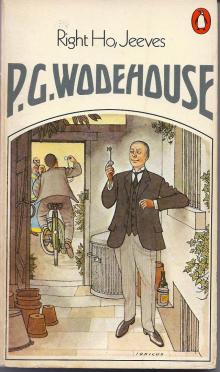 Right Ho, Jeeves
Right Ho, Jeeves The Intrusion of Jimmy
The Intrusion of Jimmy The Jeeves Omnibus - Vol 1:
The Jeeves Omnibus - Vol 1: Aunts Aren't Gentlemen:
Aunts Aren't Gentlemen: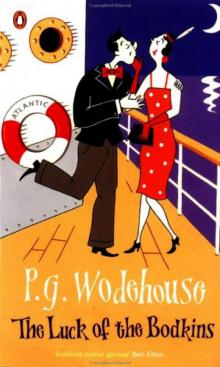 The Luck of the Bodkins
The Luck of the Bodkins The Little Nugget
The Little Nugget Money for Nothing
Money for Nothing Pearls, Girls and Monty Bodkin
Pearls, Girls and Monty Bodkin Mulliner Nights
Mulliner Nights Blandings Castle and Elsewhere
Blandings Castle and Elsewhere Love Among the Chickens
Love Among the Chickens Carry On, Jeeves!
Carry On, Jeeves! The Little Warrior
The Little Warrior Ice in the Bedroom
Ice in the Bedroom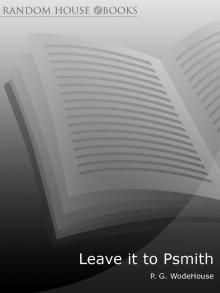 Leave It to Psmith
Leave It to Psmith Thank You, Jeeves:
Thank You, Jeeves: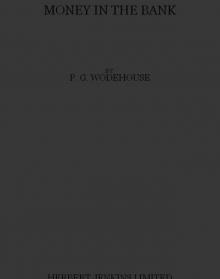 Money in the Bank
Money in the Bank The Man Upstairs and Other Stories
The Man Upstairs and Other Stories Galahad at Blandings
Galahad at Blandings The Jeeves Omnibus Vol. 5
The Jeeves Omnibus Vol. 5 Uncle Dynamite
Uncle Dynamite Mike at Wrykyn
Mike at Wrykyn Something Fresh
Something Fresh Eggs, Beans and Crumpets
Eggs, Beans and Crumpets The Swoop: How Clarence Saved England (Forgotten Books)
The Swoop: How Clarence Saved England (Forgotten Books) Blanding Castle Omnibus
Blanding Castle Omnibus Wodehouse at the Wicket: A Cricketing Anthology
Wodehouse at the Wicket: A Cricketing Anthology Mr. Mulliner Speaking
Mr. Mulliner Speaking Hot Water
Hot Water The Jeeves Omnibus - Vol 3: The Mating Season / Ring for Jeeves / Very Good, Jeeves
The Jeeves Omnibus - Vol 3: The Mating Season / Ring for Jeeves / Very Good, Jeeves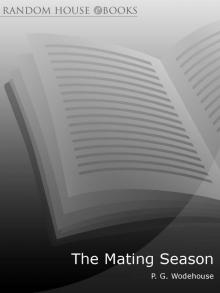 The Mating Season
The Mating Season Meet Mr. Mulliner
Meet Mr. Mulliner The Man with Two Left Feet, and Other Stories
The Man with Two Left Feet, and Other Stories Not George Washington — an Autobiographical Novel
Not George Washington — an Autobiographical Novel Young Men in Spats
Young Men in Spats The Jeeves Omnibus Vol. 4
The Jeeves Omnibus Vol. 4 A Pelican at Blandings:
A Pelican at Blandings: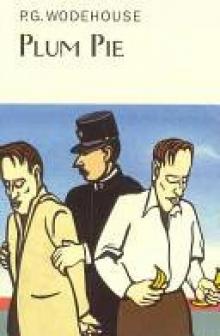 Plum Pie
Plum Pie Wodehouse On Crime
Wodehouse On Crime The Jeeves Omnibus Vol. 2: Right Ho, Jeeves / Joy in the Morning / Carry On, Jeeves
The Jeeves Omnibus Vol. 2: Right Ho, Jeeves / Joy in the Morning / Carry On, Jeeves The Man With Two Left Feet
The Man With Two Left Feet Full Moon:
Full Moon: Jeeves and the Feudal Spirit:
Jeeves and the Feudal Spirit: Ring For Jeeves
Ring For Jeeves Something New
Something New The Girl on the Boat
The Girl on the Boat The Girl in Blue
The Girl in Blue Pigs Have Wings:
Pigs Have Wings: The Adventures of Sally
The Adventures of Sally A Prefect's Uncle
A Prefect's Uncle Lord Emsworth and Others
Lord Emsworth and Others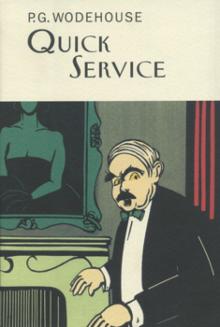 Quick Service
Quick Service The Prince and Betty
The Prince and Betty The Gem Collector
The Gem Collector The Gold Bat
The Gold Bat Expecting Jeeves
Expecting Jeeves Doctor Sally
Doctor Sally Psmith, Journalist
Psmith, Journalist The Golf Omnibus
The Golf Omnibus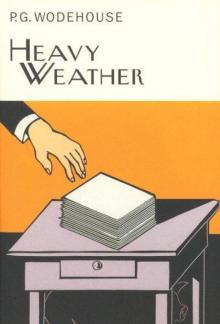 Heavy Weather
Heavy Weather A Damsel in Distress
A Damsel in Distress The Coming of Bill
The Coming of Bill Summer Lightning
Summer Lightning Piccadilly Jim
Piccadilly Jim Psmith in the City
Psmith in the City The Pothunters
The Pothunters Service With a Smile
Service With a Smile Big Money
Big Money Three Men and a Maid
Three Men and a Maid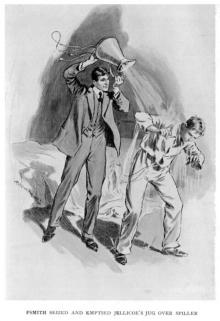 Mike and Psmith
Mike and Psmith Mike
Mike Tales of St. Austin's
Tales of St. Austin's Indiscretions of Archie
Indiscretions of Archie Pigs Have Wings
Pigs Have Wings The Jeeves Omnibus - Vol 4: (Jeeves & Wooster): No.4
The Jeeves Omnibus - Vol 4: (Jeeves & Wooster): No.4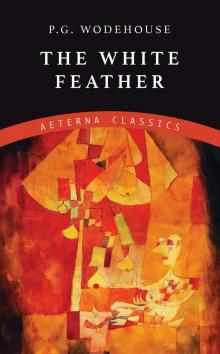 The White Feather
The White Feather Luck of the Bodkins
Luck of the Bodkins THE SPRING SUIT
THE SPRING SUIT Full Moon
Full Moon Very Good, Jeeves
Very Good, Jeeves Thank You, Jeeves
Thank You, Jeeves Reginald's Record Knock.
Reginald's Record Knock. Wodehouse At the Wicket
Wodehouse At the Wicket LADIES AND GENTLEMEN V. PLAYERS
LADIES AND GENTLEMEN V. PLAYERS The Jeeves Omnibus - Vol 5: (Jeeves & Wooster)
The Jeeves Omnibus - Vol 5: (Jeeves & Wooster) The Jeeves Omnibus - Vol 1: (Jeeves & Wooster): No.1
The Jeeves Omnibus - Vol 1: (Jeeves & Wooster): No.1 Jeeves in the offing jaw-12
Jeeves in the offing jaw-12